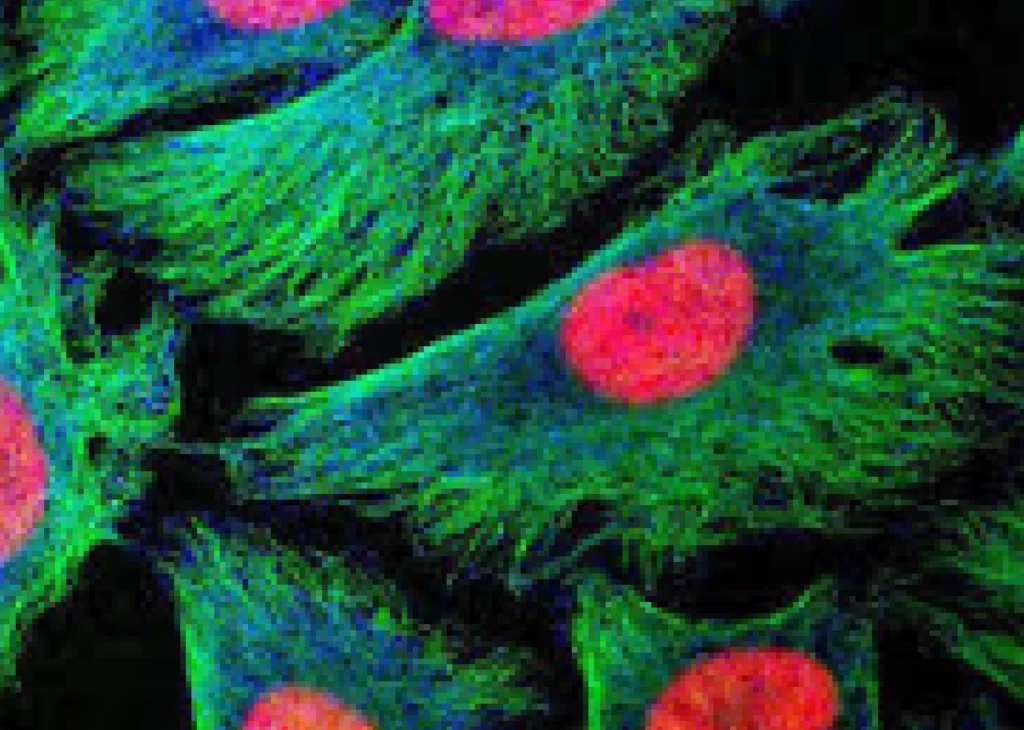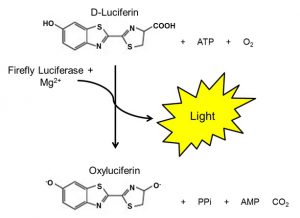
Luciferase is the general term given to a class of oxidative enzymes that catalyze reactions that give off light, a process known as bio-luminescence (Fig. 1). In biology, researchers can take advantage of this reaction and use it as a readout for various biological processes. This has perhaps been exploited most in luciferase reporter cell lines where a promoter region from a gene of interest is placed immediately upstream of the coding sequence for luciferase. In this system, transcriptional activation of the gene of interest leads to a level of luciferase expression that is proportional to the level of gene activation.
The level of activation is then assessed by lysing the cells and adding the luciferase substrate, D-luciferin.
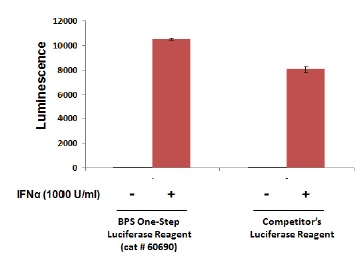
BPS Bioscience has developed the One-Step Luciferase Assay System, which is accomplished in a single step as the lysis buffer has been formulated with D-luciferin. After a brief incubation period, bioluminescence is read on a luminometer. The assay is designed to be used for high-throughput, sensitive quantitation of firefly luciferase activity in mammalian cell culture. The reagent consists of two components, a Luciferase Reagent Buffer (Component A) and Luciferase Reagent Substrate (Component B). Component A and Component B are combined to form a working solution that contains all the necessary components for cell lysis and luciferase quantitation. This assay system has several features:
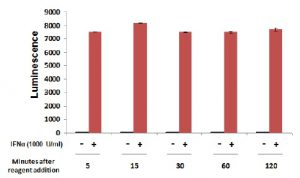
- Sensitivity – highly sensitive detection of firefly luciferase activity (see comparison with competitor’s reagent in Fig 2).
- Stability – the signal output is stable for more than two hours, providing flexibility with regard to incubation time (Fig 3).
- Convenience – simple one-step, homogeneous protocol.
- High-throughput – one-step homogeneous protocol minimizes handling steps to support high-throughput screening applications.
- Compatibility – works well with a variety of common media containing 0-10% serum and phenol red.
- Instrumentation – does not require a luminometer with injectors.
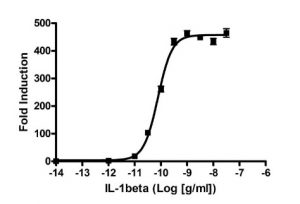
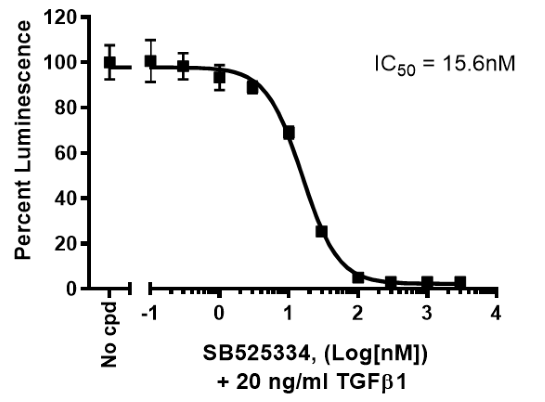
The One-Step Luciferase Assay can be used with a wide variety of reporter cell lines provided by BPS Biosciences as well as other reporter cell lines based on firefly luciferase reporters.
Here is a selection of reporter cell lines available:
- AP-1 Reporter
- ARE Reporter
- CD40/NF-κB Reporter
- CRE/CREB Reporter
- GR-GAL4 Reporter
- Gli Reporter
- ISRE Reporter
- Myc Reporter
- NF-kB Reporter (for typical results see Fig 4)
- NFAT Reporter
- PD-1 / NFAT Reporter
- RAR-α Reporter
- RAR-β Reporter
- RAR-γ Reporter
- SRE Reporter
- TEAD Reporter
- TGF-β Reporter (for typical results see Fig 5)
- Wnt Reporter
Are you interested in testing the One-Step Luciferase Assay in your laboratory? Reach out to your local Tebubio office, we’ll be pleased to help.
